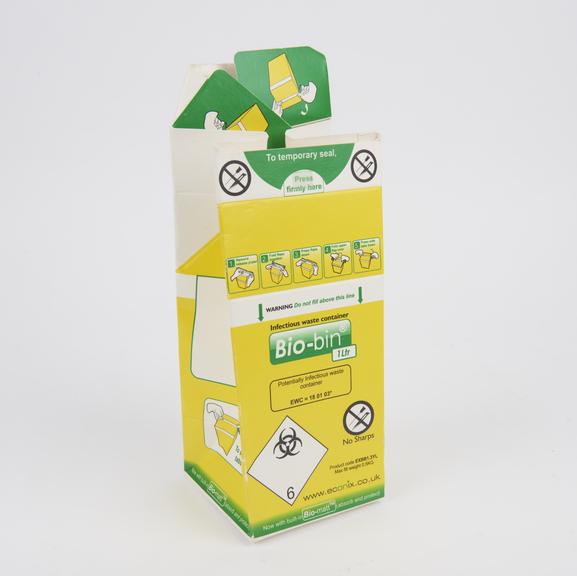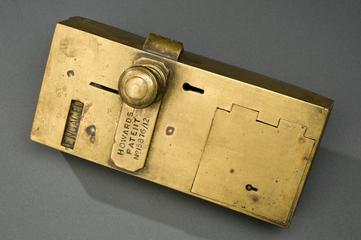
Bio-hazard bin, for disposing of contaminated equipment
- Made:
- circa 2014-15 in unknown place

Bio-hazard bin, Bio-bin®, for disposing of contaminated equipment, for use by laboratory workers in the 'diagnostic tent' at the Manteneh Ebola Treatment Centre during the Ebola outbreak in Sierra Leone, 2014-2015
Safely disposing of clinical waste especially material used to diganose and treat people with Ebola is essential to preventing its spread. The virus is transmitted such as through contact with blood and body fluids of someone with an active infection.
Set up by the International Medical Corps the clinic in Manteneh Ebola Treatment Centre, Makeni included frontline interactions with suspected or confirmed cases, the daily diagnostic procedures as samples were tested through to the administrative elements of certification and the role of health awareness materials.
The West African epidemic of Ebola that began in 2014 was the most widespread outbreak of the virus disease in history—causing major loss of life and disruption to society and the economy, mainly in the countries of Guinea, Liberia, and Sierra Leone. It became international news and prompted an international medical response. In June 2016 when Guinea was the last country to be declared free of Ebola, there were more than 28,000 cases and more than 11,000 deaths. Since 2021, a vaccine has been available to protect high-risk populations and frontline workers.
Details
- Category:
- Public Health & Hygiene
- Object Number:
- 2020-82
- Materials:
- paper
- Measurements:
-
overall: 253 mm x 105 mm x 105 mm,
- type:
- bio-hazard bin




